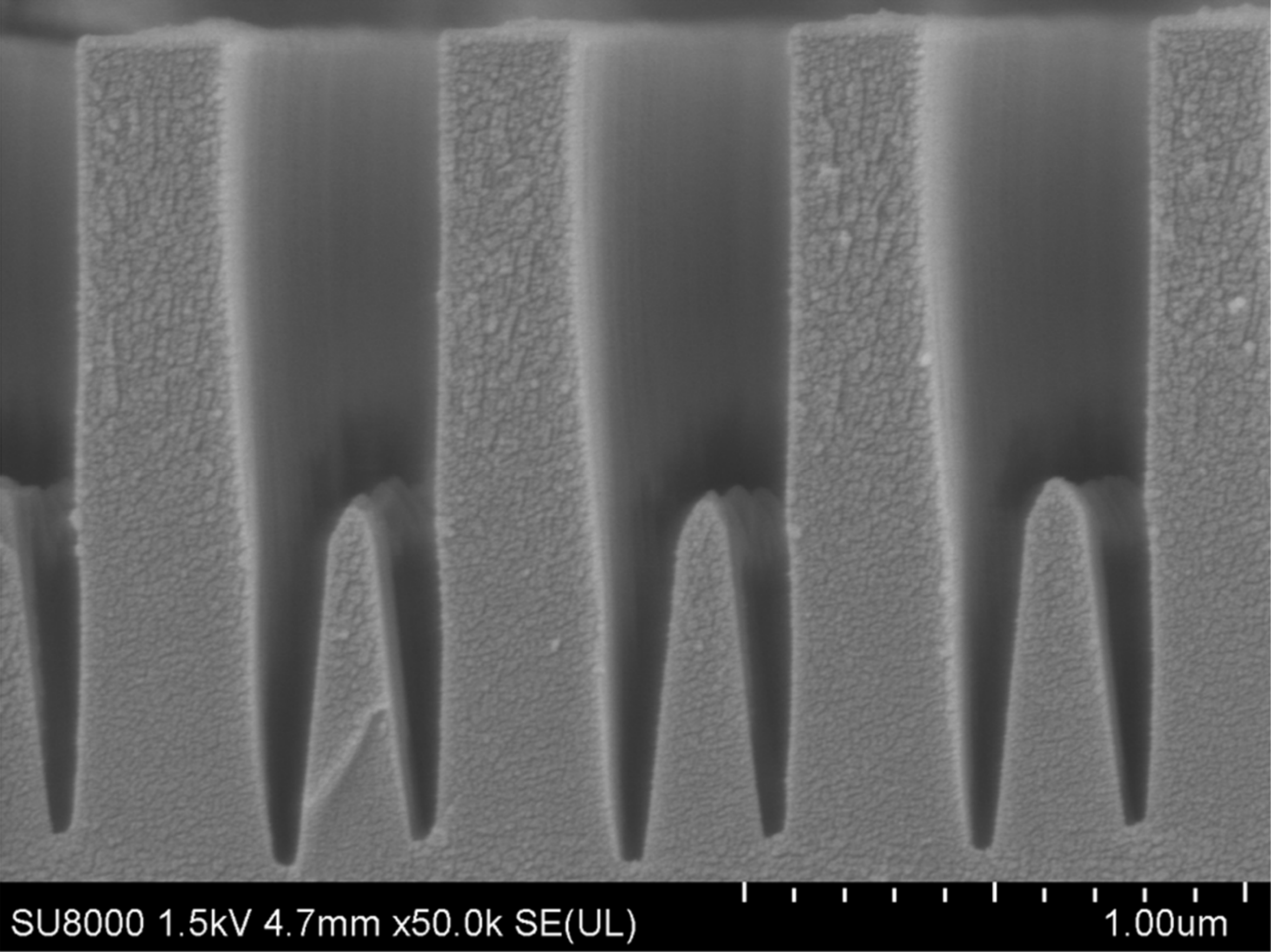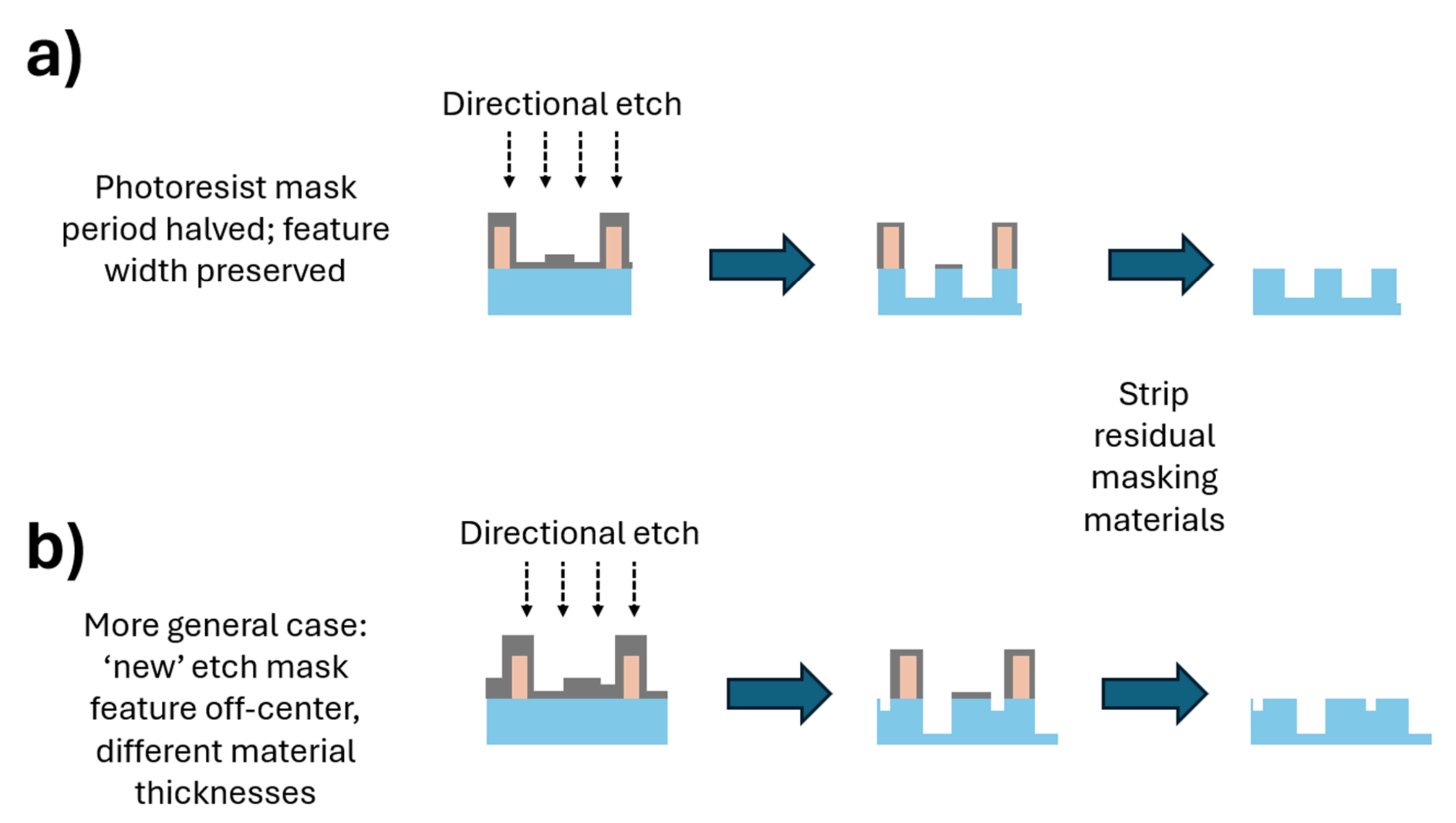Laser systems often utilize waveplates to control the polarization of the light, and, when used in conjunction with other optical elements, they can be used to control the transmitted laser power.
Conventional birefringent materials have some limitations, namely: (1) optical materials exhibiting desirable natural birefringence often have a low laser-induced damage threshold, placing an upper limit on the laser power the system can safely use before the waveplate, and (2) these specialized materials exhibiting bulk birefringence also tend to be more expensive for shorter wavelengths.
This LLNL invention allows for the fabrication of complex waveplate features and topologies from fused silica, a highly desirable and durable waveplate material. It also is a unique technique for density multiplication and high-fidelity bidirectional deposition, which can create optical components that are generally for entirely new classes of optical materials.
Left Image Caption: Fabrication of height modulated and tapered features in fused silica
Right Image Caption: Illustration of directional etching process and subsequent material stripping process showcasing a) density multiplication and b) the ability to etch off-center features using directional etches. Silver color depicts metal, blue color denotes underlying substrate, and tan color shows the initial photoresist mask.
This technique enables highly dense and controllable fabrication and deposition of durable waveplate features in fewer steps leading to lower costs, less complex process development.
- High laser damage threshold fused silica components
- Optical components with
- Complex birefringent optical material topologies
- Increased density of replicable features with higher reliability
Current stage of technology development: TRL ☒ 0-2 ☐ 3-5 ☐ 5-9



